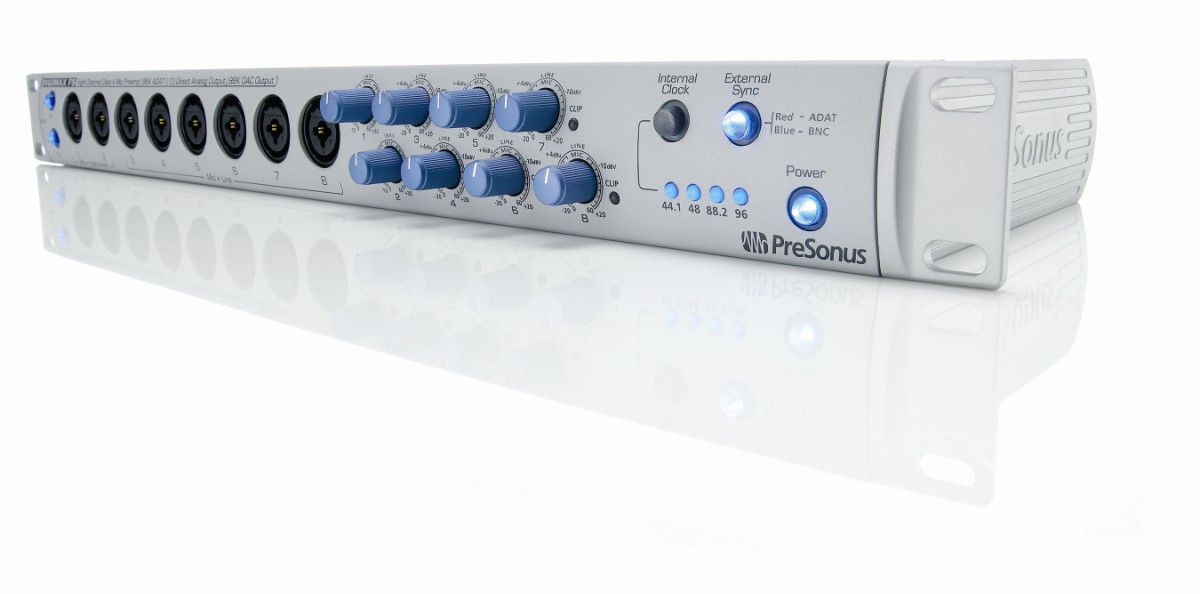MusicRadar Verdict
If you need extra digital mixer channels, the DixiMax FS provides a cost-effective, robust solution.
Pros
- +
So many ins! Solid build quality.
Cons
- -
No computer connection options.
MusicRadar's got your back
Project studio builders will typically kit themselves out with enough audio ins and outs to cater for their own needs. Then friends get wind of the rig and, sniffing a money-saving opportunity, attempt to blag some free recording for their bands. "Sure," you say as they ply you with booze, but when the sauce wears off you realise that they've got more audio sources than you have inputs by which to record them. A drum kit will occupy four at the very least, then there's the bass, guitar, vocal mic and whatever else. Suddenly, the session starts to look complicated.
Alternatively, in a spending frenzy you've lashed out on hardware tone generators and your mixing desk or audio interface starts to look thin on ins. In either scenario, you could deploy a sub-mixer or buy a bigger desk, but PreSonus has a new gadget that could present a much more elegant solution.
Sturdy
The DigiMax FS is an 8-channel mic preamp sporting balanced line/mic ins via TRS or XLR, each with its own discrete amp, rotary trim control and clip indicator. At rear, we've eight quarter-inch outs, another eight direct outs for routing signals to a backup device, plus an insert jack for each channel. There are also optical ins and outs (ADAT, 24-bit, 96kHz), two for channels 1-4 and two for 5-8, plus BNC ins and outs for wordclock, along with a terminate switch, should you want to chain multiple devices that require wordclock sync.
This is not an A/D converter for your computer, so there's no USB or FireWire port, but an expander that adds channels to a digital console and is designed to complement PreSonus' own FireStudio, or third-party, lightpipe-equipped systems from DigiDesign, RME, Yamaha, Alesis, Mackie and more.
Build-wise, the FS is a sturdy 19-inch rack job - even the mains connector has a knurled knob so that the power cable from the supplied 18V trailing transformer won't fall out.Once rigged, it provides an extra eight analogue ins, eight analogue or digital outs, another eight direct analogue outs mirroring the ins, and eight send/returns.
If using optical, the FS can be used as a wordclock slave or master, with internal clock settings of 44.1, 48, 88.2 or 96kHz. If you prefer to keep audio and clock data separate, the BNCs are there, as is a front-panel switch to toggle between ADAT and BNC sync.
What's really exciting about the FS is the array of inserts at rear. Eight quarter-inch TRS sockets enable you to send, via ring, to such external signal processors as compressors, EQs, gates and effects, and route them back before the output stage, via tip, which adds considerably to the unit's flexibility. Returns 1 and 2 also double as line level inputs for those situations when you're not using inputs 1 and 2 for instruments or mics.
Functional
If you're in need of extra channels, you could plump for an extra mixer, although it's doubtful you'd get digital connectivity at under £600, and there's an issue of space - the FS occupies a mere 1U in your rack.
Looking at similar multi-channel preamps on the market, few compete in terms of signal-routing options and the FS is very competitive on price. If PreSonus was to build in a data port for computer hook-up, the unit would be monstrously desirable.
As it is, the FS performs a valuable function at a reasonable cost and makes notions of full band recording or project studio expansion all the more realistic and affordable.
MusicRadar is the number 1 website for music makers of all kinds, be they guitarists, drummers, keyboard players, djs or producers...
GEAR: We help musicians find the best gear with top-ranking gear round-ups and high- quality, authoritative reviews by a wide team of highly experienced experts.
TIPS: We also provide tuition, from bite-sized tips to advanced work-outs and guidance from recognised musicians and stars.
STARS: We talk to musicians and stars about their creative processes, and the nuts and bolts of their gear and technique. We give fans an insight into the actual craft of music making that no other music website can.
““We were arguing a lot and we were miserable”: How Green Day exceeded expectations with their most ambitious song
"There’s plenty for us guitarists to learn – and ‘less is more’ is the overriding lesson": how to play like George Harrison on The Beatles' Abbey Road
“They didn’t like Prince’s bikini underwear”: Prince’s support sets for the The Rolling Stones in 1981 are remembered as disastrous, but guitarist Dez Dickerson says that the the crowd reaction wasn’t as bad as people think











